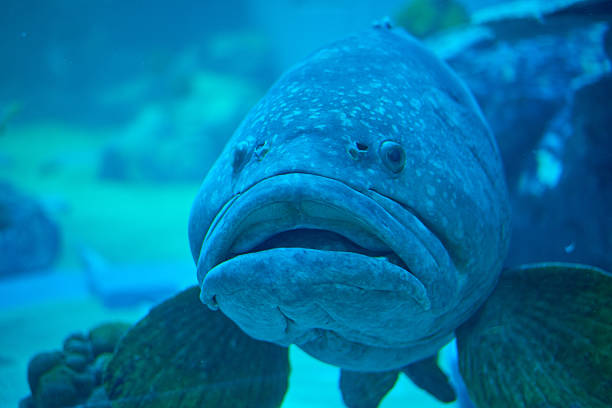1. Introduction to Fish with Big Lips
Fish with big lips are a fascinating group of species found in both freshwater and marine environments. Their enlarged lips serve various functions such as feeding, communication, or even mating displays.
These distinctive facial features are not just for show — in many cases, they have evolved over time to help the fish adapt to specific ecological niches. From puffed-up lips used for sucking prey to exaggerated mouths meant to attract mates, big-lipped fish showcase nature’s creativity.
2. Why Do Some Fish Have Big Lips?
Big lips in fish are often evolutionary adaptations that help them survive in their environment. For example, some bottom-dwelling fish use their large lips to sift through sand or mud to find food more efficiently.
In other cases, the lips play a role in species recognition or sexual selection. Brightly colored or unusually shaped lips may help fish attract a mate or intimidate rivals during mating season.
3. The Famous Sweetlips Fish
Sweetlips fish, part of the Plectorhinchus genus, are perhaps the most well-known for their noticeably thick and colorful lips. These marine fish are often seen in coral reefs, slowly swimming in pairs or small groups.
Their large lips are not only eye-catching but help them forage for invertebrates in crevices. With vibrant body patterns and oversized mouths, sweetlips fish are a favorite among underwater photographers.
4. The Humphead Wrasse’s Distinctive Mouth
The humphead wrasse, also known as the Napoleon wrasse, is a giant reef fish with pronounced, fleshy lips. This species is one of the largest in coral reef ecosystems and can grow over six feet long.
Their large lips are believed to help them crush and eat hard-shelled animals like mollusks and sea urchins. Despite their bulky appearance, they are graceful swimmers and an essential part of reef biodiversity.
5. Freshwater Fish with Big Lips
Big-lipped fish aren’t limited to saltwater habitats — some freshwater species also feature prominent mouths. For instance, certain cichlids and gouramis have noticeably large lips used for feeding and territorial disputes.
These lips can help in scooping substrate, grasping prey, or even fighting with rivals during breeding seasons. Their appearance may look exaggerated, but it serves practical and behavioral purposes in the wild.
6. Big Lips and Feeding Strategies
Many fish with big lips have developed specialized feeding strategies that take advantage of their unique mouth structure. These lips often act like suction cups or scoops, helping the fish extract prey from difficult spots.
Some species can protrude their lips forward to create a vacuum, pulling in small prey like worms, crustaceans, or plankton. This allows them to feed in narrow cracks and crevices where other fish can’t reach.
7. The Role of Big Lips in Mating Displays
In some fish species, large lips are part of an elaborate mating ritual. Males may use their enlarged mouths to attract females or to fight off competitors. In these cases, the lips can act as visual cues of health and vitality.
Coloration around the lips may intensify during mating seasons, making them more noticeable. This visual enhancement can play a crucial role in mate selection, especially in visually-driven environments like coral reefs.
8. Fish with Big Lips in Aquariums
Many fish with big lips are popular in the aquarium trade due to their unique appearance and vibrant coloration. Species like the kissing gourami or the humphead wrasse (in very large aquariums) attract attention from enthusiasts.
However, keeping these fish requires understanding their behavior, habitat needs, and diet. Some big-lipped species can be territorial, and their feeding habits may require specific substrates or tank setups.
9. Conservation Concerns for Big-Lipped Fish
Some of the most iconic big-lipped fish, like the humphead wrasse, are under threat due to overfishing and habitat destruction. Their slow growth and late maturity make them especially vulnerable to population decline.
Coral reef degradation and illegal fishing practices have made conservation efforts more urgent. Protecting these fish involves marine protected areas, sustainable fishing laws, and public awareness.
10. Fun Facts About Big-Lipped Fish
Did you know that the kissing gourami actually “kisses” as part of a dominance display, not affection? This behavior often occurs between two males trying to assert control over a territory.
Another interesting fact: some fish can change the size and shape of their lips depending on diet or life stage. These adaptable traits show just how dynamic and varied fish evolution can be, especially when it comes to something as expressive as lips.


